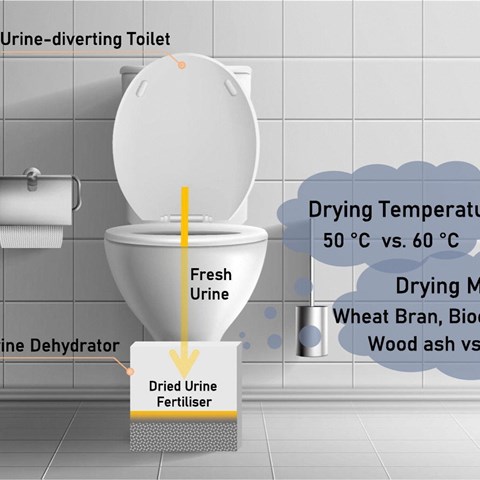Preliminary insights into using different dehydration temperature and media.
For sanitation systems aiming at recycling nutrients, separately collecting urine at source is desirable as urine contains most of the nutrients in wastewater.
However, reducing the volume of the collected urine and recovering majority of its nutrients is necessary, as this improves the transportability and the end-application of urine-based fertilisers. In this study, we present an innovative method, alkaline dehydration, for treating fresh human urine into a nutrient-rich dry solid.
Our aim was to investigate whether fresh urine (pH < 7) added to five different alkaline media (pH > 11) could be dehydrated at elevated temperatures (50 and 60 °C) with minimal loss of urea, urine's principal nitrogen compound. We found that it was possible to concentrate urine 48 times, yielding dry end-products with high fertiliser value: approximately, 10% N, 1% P, and 4% K.
We monitored the physicochemical properties and the composition of various dehydration media to provide useful insights into their suitability for dehydrating urine. We demonstrated that it is possible to recover >90% nitrogen when treating fresh urine by alkaline dehydration by inhibiting the enzymatic hydrolysis of urea at elevated pH and minimising the chemical hydrolysis of urea with high urine dehydration rates.
